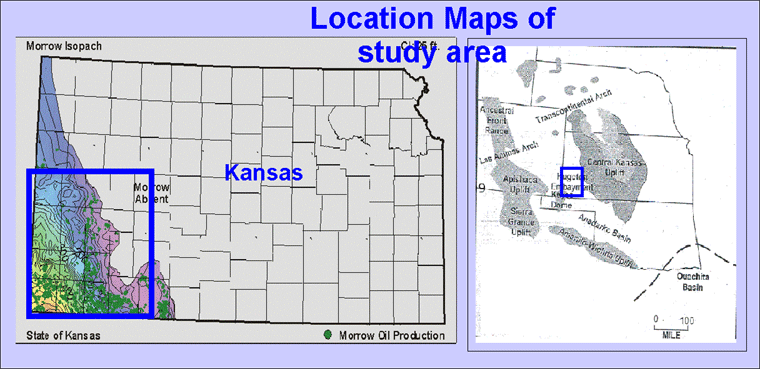 |
|
Kansas Geological Survey Open-file Report 2003-34 |
Regional Sequence Stratigraphy and Depositional Environments of Lower Pennsylvanian Reservoir Sandstones, Southwestern Kansas
Galo Aristides Salcedo and Timothy R. Carr
Abstract
Lower Pennsylvanian Morrow sandstone units in southwestern Kansas have produced hydrocarbons for more than six decades, but remain an attractive target for the hydrocarbon exploration and development. The Morrow sandstone was deposited above a pre-Pennsylvanian regional unconformity in the Hugoton embayment a northeast shelf-like extension of the Anadarko Basin. Numerous depositional models have been proposed for the Lower Pennsylvanian siliciclastic succession, and stratigraphic nomenclature can be confusing. Based on wireline logs and cores, a regional sequence-stratigraphic framework has been established for the Morrow of southwest Kansas. Up to six depositional sequences associated with distinct incised valleys are recognized. The valleys are oriented in a north-south direction. Individual incised valleys range from 10 to 70 km in width and have been traced southward for over 200 km. The lower three incised valley-fill complexes (1, 2 and 3) thicken from 6 meters southward to over 30 m. The younger incised valley-fill complexes (4-6) are each less than 10 m thick. Depositional systems composed of fluvial, estuarine and shallow marine lithofacies fill each incised valley. The observed eastward temporal migration of the lower incised valley complexes reflected subtle syndepositional regional tectonic movements in southwest Kansas and adjoining Colorado.
In addition to lithofacies and diagenetic controls, reservoir quality is strongly influenced by location within a particular incised valley fill complex. An improved understanding of depositional environments and chronostratigraphic framework of the “Morrow” sandstone can help enhanced-oil recovery projects and give new insights for continued hydrocarbon exploration and development drilling in the area.

|
|
e-mail : webadmin@kgs.ku.edu
Last updated July 2003
http://www.kgs.ku.edu/PRS/publication/2003/ofr2003-34/P1-02.html